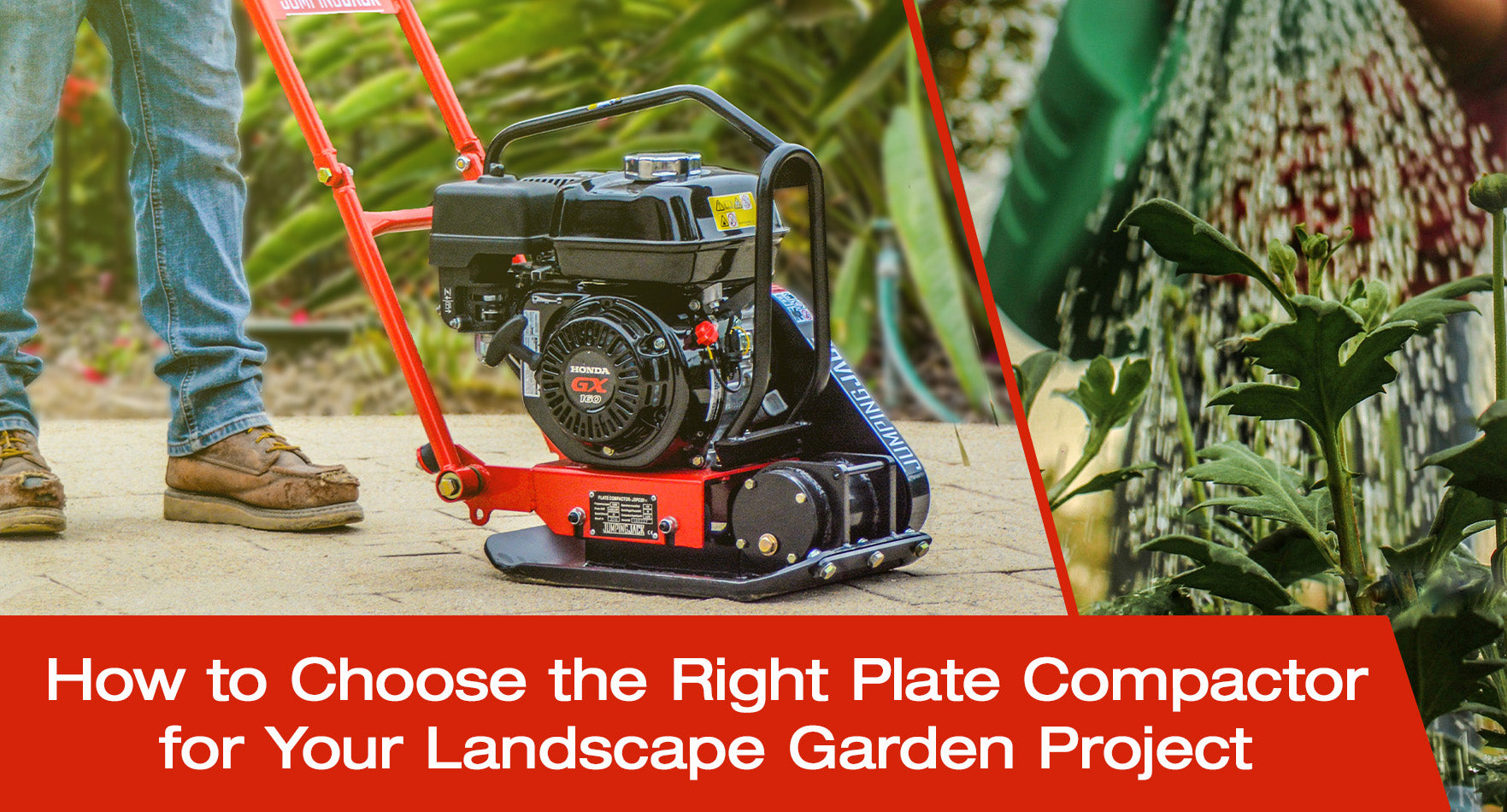When it comes to landscaping garden projects, having the right tools at your disposal can make all the difference in achieving professional-quality results. One such essential tool is the plate compactor, a versatile machine designed to compact soil, gravel, and other materials to create a solid and level surface. But with a wide range of plate compactors available on the market, how do you choose the right one for your specific project? In this guide, we'll walk you through the key factors to consider when selecting a plate compactor for your landscape garden project.
1. Determine Your Project Needs
Before investing in a plate compactor, it's essential to assess the scope and scale of your landscape garden project. Consider factors such as the size of the area to be compacted, the type of soil or material you'll be working with, and any specific requirements or challenges unique to your project. This initial assessment will help you determine the size, power, and features needed in a plate compactor to effectively meet your project needs.
2. Consider Plate Size and Weight
Plate compactors come in a variety of sizes and weights, each suited to different types of projects. Larger plates are ideal for compacting larger areas quickly, while smaller plates offer greater maneuverability in tight spaces. Additionally, heavier plate compactors exert more force, making them better suited for compacting denser materials or achieving greater compaction depths. Consider the size and weight of the plate compactor relative to the size and scale of your project to ensure optimal performance.
3. Assess Engine Power and Performance
The engine power of a plate compactor directly impacts its compaction force and performance. Gas-powered plate compactors typically offer greater power and compaction force than their electric counterparts, making them well-suited for heavy-duty applications and compacting dense materials. However, electric plate compactors are often lighter, quieter, and more environmentally friendly, making them a preferred choice for smaller projects or indoor use. Assess your project requirements and choose a plate compactor with the appropriate engine power and performance to meet your needs.
4. Evaluate Vibration Frequency and Amplitude
Vibration frequency and amplitude are critical factors that determine the effectiveness of a plate compactor in compacting soil and other materials. Higher vibration frequencies and amplitudes result in greater compaction force and efficiency, allowing you to achieve optimal compaction with fewer passes. Look for plate compactors with adjustable vibration settings or variable speeds, allowing you to tailor the compaction process to the specific requirements of your project.
5. Consider Additional Features and Accessories
Finally, consider any additional features or accessories that may enhance the usability and versatility of your plate compactor. Features such as reversible plates, foldable handles, and built-in water tanks for asphalt compaction can significantly improve efficiency and ease of use. Additionally, accessories such as extension plates, pad foot attachments, and rubber mats can expand the capabilities of your plate compactor and enable you to tackle a wider range of tasks effectively.
Choosing the right plate compactor is essential for achieving professional-quality results in your landscape garden project. By considering factors such as project needs, plate size and weight, engine power and performance, vibration frequency and amplitude, and additional features and accessories, you can select a plate compactor that meets your specific requirements and maximizes efficiency and effectiveness. With the right plate compactor by your side, you can tackle even the most challenging compaction tasks with confidence and precision, ensuring a solid and level surface for your landscape garden project to thrive.










